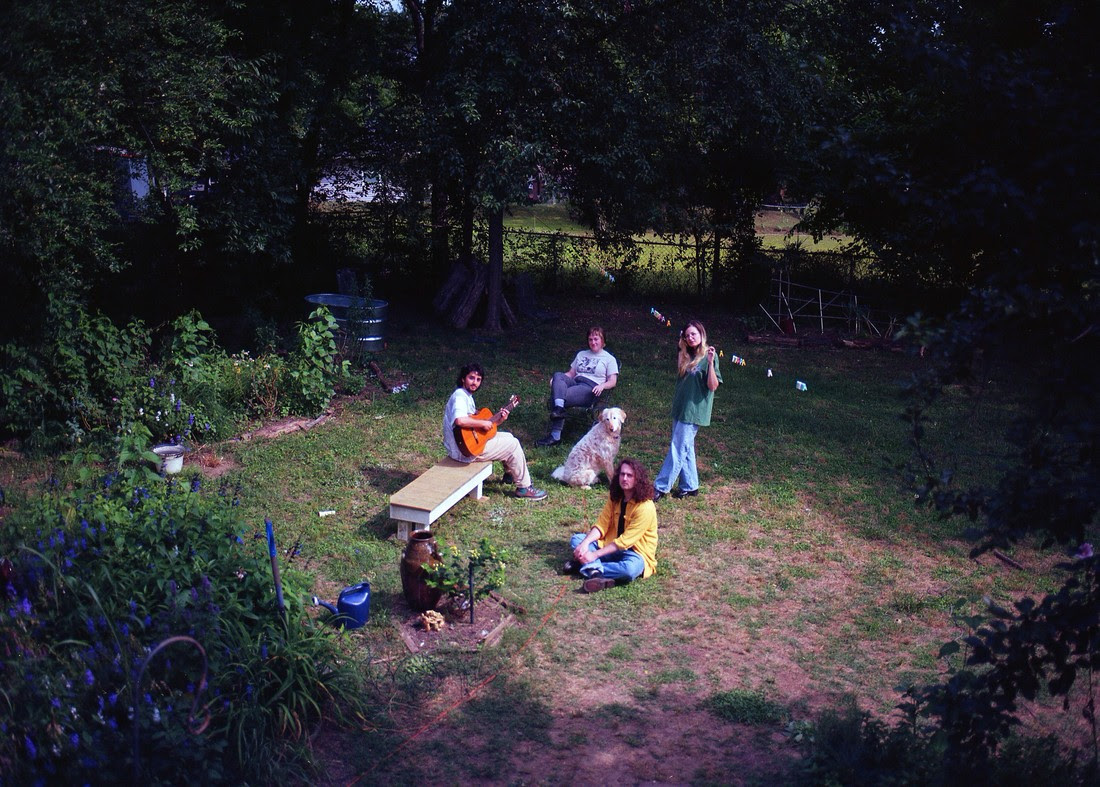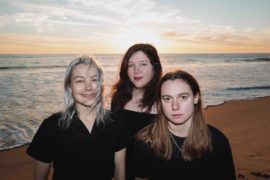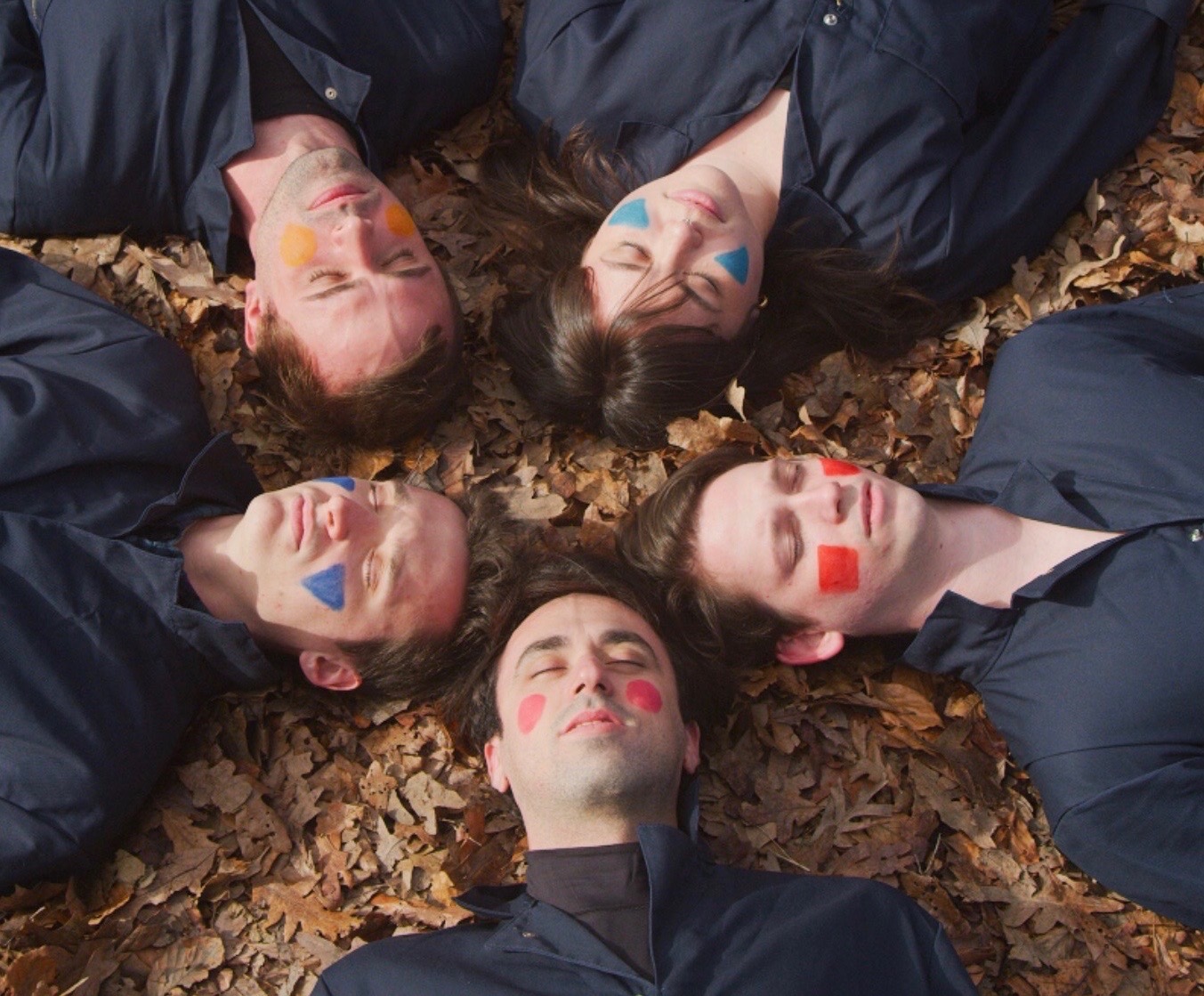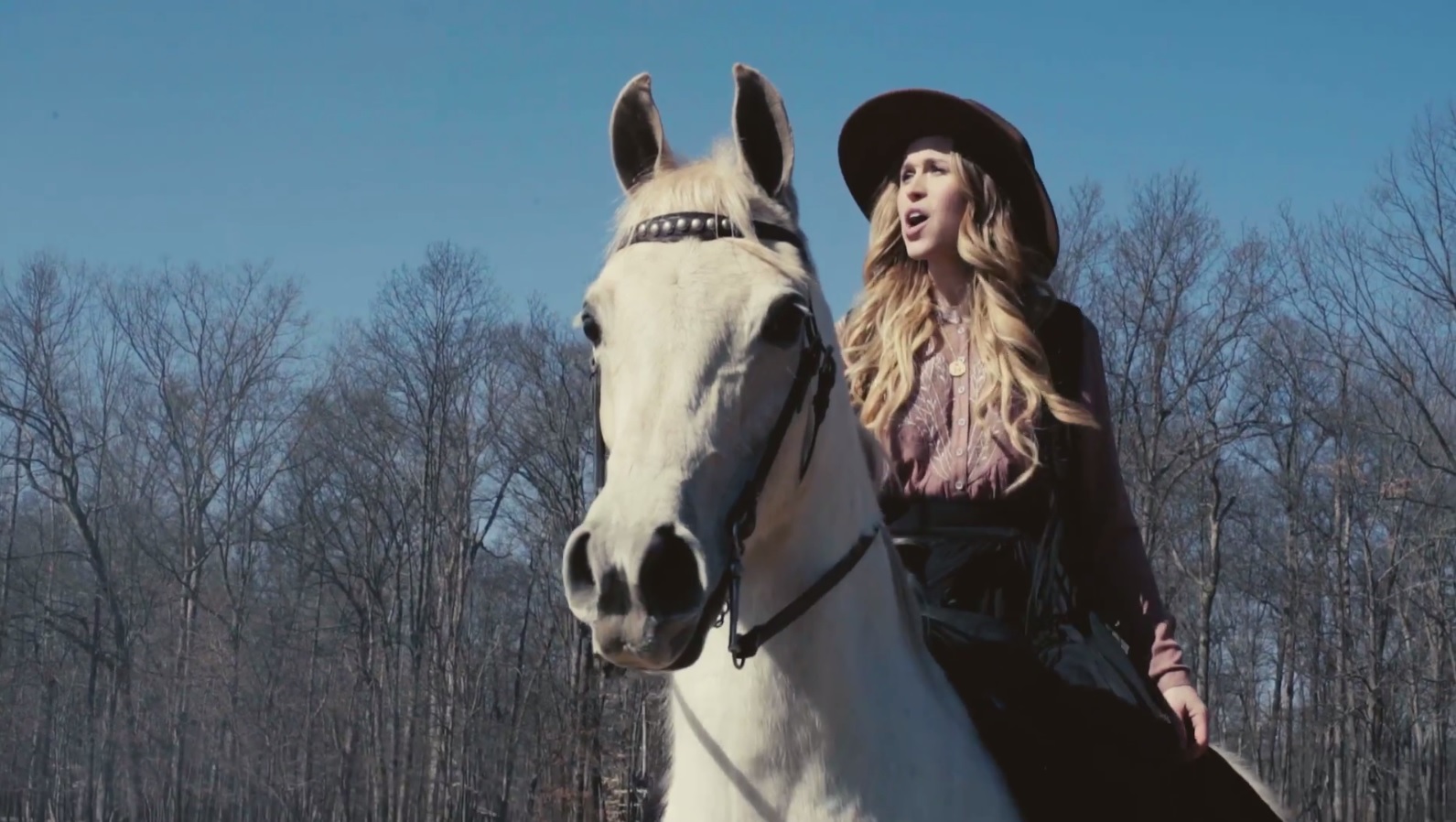Atwood Magazine talks history, a seemingly-fluid genre, and an ostracized single with up-and-coming Raleigh rock quartet Truth Club.
by guest writer Heidi Reid
Stream: ‘Running From the Chase’ – Truth Club
Four years ago, Truth Club made their debut with the noisy and brilliant Not an Exit, skipping the usual juvenile charms of a freshman album and opting to tackle more sagacious and slightly unnerving sounds. Since then, the group has officially added Yvonne Chazal to the initial trio of guitarist and vocalist Travis Harrington, drummer Elise Jaffe and bassist Kameron Vann, and has been quietly running around NC refining their sound and depending on a more collaborative process. Their newest album Running From The Chase, released Oct. 6, reflected a kind of rebirth for the band, despite being written over the span of many years with some songs even overlapping with Not an Exit. Running From The Chase builds on that foundation with more ambitious sound, lyrics and vocal arrangement.

What sets Truth Club apart from every other North Carolina indie foursome is their experimental and outlandish sound features – rumor has it ‘Suffer Debt’ features the sound of cymbals being run over by a truck — and the vulnerable lyrics that propel the listener towards an unfamiliar headspace and a firsthand experience of a long-fought struggle with mental stability. Such a consistent topic throughout ‘Running From The Chase’ is well-received from an empathetic perspective, as the words are blunt but not harsh. Harrington sings in ‘Exit Cycle’:
So just carry me out to the sky, I need the sunlight
Under a harsh lens even your face looks so unkind
Hopelessness asserts itself, not the last time
Still can’t shake it, how surely it states its case
And undoes mine
The emotional track list is diffused by the occasional adrenaline-infused headbanger, knowingly and seamlessly approaching just when it feels like the writer—and the listener—is on the brink of unsoundness. ‘Blue Eternal’ and ‘Siphon’ both act as an apparent stepping stone to abstain from this void, but only in sound. As long as the listener doesn’t pick apart the intricacies of the lyrics, these noisy and fun ups in the album give a break in the pessimism and round out the track list as a whole.
Atwood Magazine spoke to Truth Club about defining their genre, an ostracized single and how the group came together.
— —
:: stream/purchase Running from the Chase here ::
:: connect with Truth Club here ::
Stream: “Uh Oh” – Truth Club
A CONVERSATION WITH TRUTH CLUB

Atwood Magazine: How did you all meet? What prompted you to make music together?
Travis Harrington: Kameron and I met in the sixth grade. I had been dabbling in playing music because my dad is a musician, but I think we initially bonded over skateboarding and Grand Theft Auto. We stayed up until 6 a.m. one time playing Rock Band and both fell in love with Reptilia. I brought my guitar over the next time we had a sleepover and was like “you should get one so we can play together.” It was a lot of mutual encouragement. We learned to play Strokes and Phantom Planet songs in his garage and started writing our own stuff. We had a band in high school and ended up playing a lot of shows and even going on a small east coast tour. That project ended because we went to college in different places.
I met Elise and Yvonne in college. We went to all the same house shows and hung around the radio station. I was desperate to start a band and Elise was the only person who I met who played drums and also was really fun to hang out with. She had never played in a rock band before, so I was a little trepidatious, but the first time we got together it clicked and we wrote most of what became “No Planned Sequel” on “Not An Exit.” It was fun to play with her because she seemed immediately engaged with composition and arrangement and also argued with me waaaaay more than Kameron about it. Kameron ended up back in the mix because Elise and I had booked a tour and needed someone to fill in on bass at the last minute. He was the only person I could think of who would be down to ride on such short notice—I also knew I could convince him to stick around for good after.
He still lived four hours away from Elise and I, so writing and fleshing out songs during school semesters was impossible. Yvonne was a good friend and a great bassist, so she would sit in with us and help flesh stuff out. At a certain point I was like “Let’s get her in here for real, she’s such a great presence, we’ll figure out how it all makes sense later.” I think we have at this point which feels great. Ultimately we make music together because I’m a great judge of character.

Why the hiatus between your two albums, and what brought about your return? Was Running From the Chase written recently, or over the course of this break?
Elise Jaffe: It’s honestly kind of funny to me that people keep referring to us taking a huge hiatus or saying that truth club is finally “back,” because that’s not really how any of us viewed it. There was a year or so that we took a break from playing shows due to COVID-19 and just generally needing a break in that time, but we’ve been “back” playing shows and working on music since mid 2021. Our return to playing music together was shortly after we all got our first round of vaccines and finally felt comfortable being in an indoor space together again. I think it also helps to contextualize the timeline a little better to know that we recorded RFTC entirely in 2022, between May and September.
The songs on RFTC vary in their timelines – “Clover” was almost released on “Not An Exit” in 2019, and we performed slightly different versions of “77x” and “Is This Working?” back in early 2020. “Uh Oh” is probably the only song that’s truly from this break; I remember Travis getting me to listen to a demo of it at work before we all started practicing together again. The way we operate as a band, Travis is usually the one to bring something between a riff and a full song to the rest of us. He has this “vault” full of god knows how many ideas, so we’ll sometimes be turning a brand new idea into a song, or a riff he’s been messing with for years. I feel like Truth Club’s music will always be a mix of old and new work- sometimes what a song most needs is to take a break and then be re-visited in the future with a new outlook and fresh ideas.
How would you describe your sound in Running From the Chase? Many reviews have described it as indie rock, do you feel that is accurate?
Yvonne Chazal: I think all of us get a little uncomfortable when we’re asked about the genre of our music. It’s difficult to fit oneself into a box in that way. Everyone defines things differently. It might be indie rock to someone, and super not indie rock to someone else. We do get put in the “post-punk” bucket pretty often, although I think to some extent, “post-punk” is just the label we’ve started to give to any music with electric guitars and is a little bit weird.
Harrington: Post-Depression Wellness-Core.
What was your main inspiration behind this sound?
Harrington: The Canon of American Alternative Rock and Suicidal Ideation as an Amazon Prime Rewards feature.

What was the inspiration behind the cover art of Running from the Chase? Why is Travis the only one facedown?
Harrington: I don’t know, I think the record had an inherent fluidity to it. Tempestuous, but also placid at times. I wanted all of us to be there because the songs felt really inward and isolated. It felt natural. I’m face down because variety is the spice of life.
What was the process of recording Running from the Chase like? Were there ever any creative differences?
Jaffe: There are always some creative differences, but our general process of writing music has been to convince one another rather than win. I feel like Travis and I are at odds the most often about ideas in a song, but as we’re writing we do our best to agree to hear each other out. We’ll play both of our ideas through, and explain why we feel so strongly about the way we think it should go. Nobody in Truth Club is ever wanting another member to respond “okay fine whatever we’ll do your idea.” Ideally, we’d like to reach a point where instead of saying that we didn’t hear it that way before, but now we understand what you’re going for.
Why wasn't “It's Time” included in the album?
Chazal: The songs that ended up on “Running From The Chase” felt like they had this cohesion that we couldn’t really put words to, but we knew very early on that “It’s Time” didn’t really fit. We also knew that the process of releasing an LP was going to take a long time, and we were eager to get something out into the world, so “It’s Time” felt like the perfect track. It was the first song we wrote as a four-piece, so it really felt like the perfect single to usher in this beginning of a new era.
Harrington: If you send me a playlist of the record with “It’s Time” sequenced in a way that makes sense, I’ll personally see to it that every last physical copy of the record is destroyed and replaced with that song in its rightful place.

What are your plans for the future? Is an album or tour in the works?
Harrington: Yes, yes, yes, always.
What's your least favorite song to perform live and why?
Harrington: “Exit Cycle,” because we’re weaklings who can’t carry our own weight without “Indigo.”
— —
:: stream/purchase Running from the Chase here ::
:: connect with Truth Club here ::
— — — —

Connect to Truth Club on
Facebook, Twitter, Instagram
Discover new music on Atwood Magazine
© Walker Bankson
:: Stream Truth Club ::


 © Walker Bankson
© Walker Bankson





